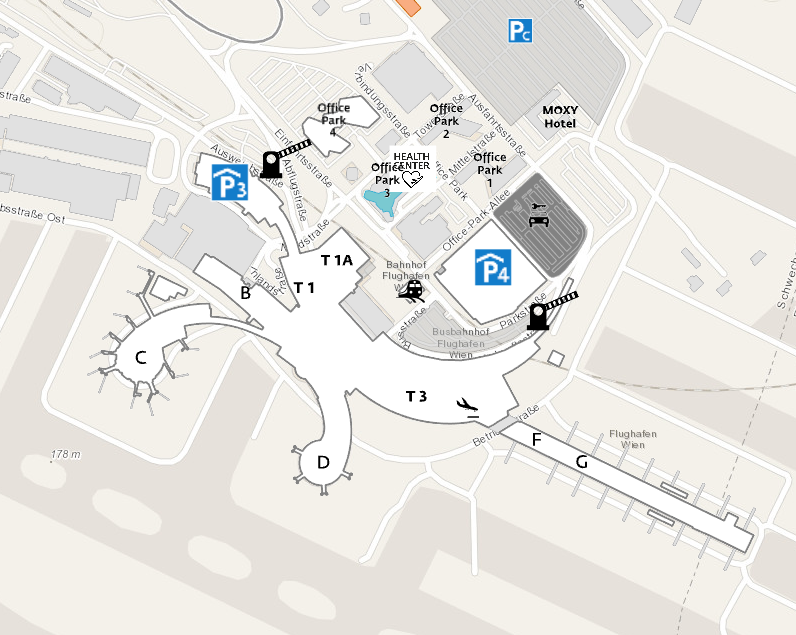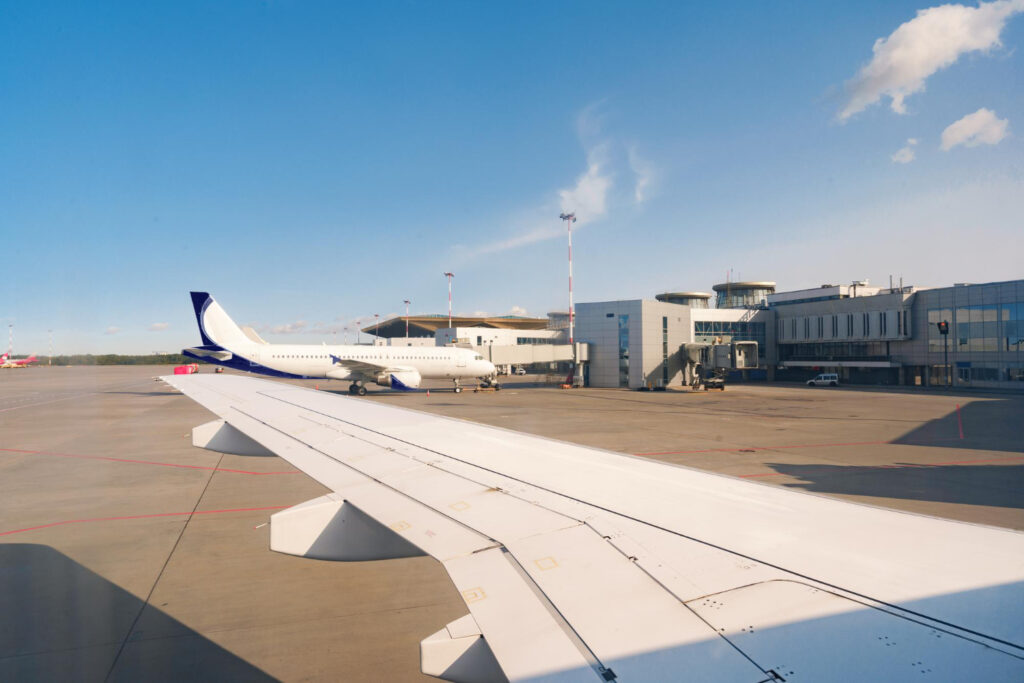Welcome to the comprehensive guide for travelers navigating through Vienna Airport, the gateway to the historic and vibrant city of Vienna and Austria’s largest and busiest airport. This guide aims to provide essential information and insider tips to ensure a seamless and stress-free experience, whether you’re arriving, departing, or simply transiting through this international hub.
Vienna International Airport (VIE), located approximately 18 kilometers southeast of central Vienna, serves as a crucial link connecting Austria with the rest of the world. It plays a crucial role in facilitating the journey of over 31 million passengers annually (as of pre-COVID-19 statistics in 2019), who travel to or from this enchanting city, recognized worldwide for its rich cultural heritage, iconic architecture, and lively arts scene.
Recognizing the diverse needs of modern travelers, Vienna Airport offers a broad range of facilities and services, meticulously designed to cater to the requirements of business travelers, families, solo explorers, and individuals with special needs. From an extensive array of dining and shopping options to a host of amenities designed to make layovers more comfortable, the airport strives to provide a memorable and pleasant experience to all passengers.
As you delve deeper into this guide, you will find detailed information about the airport’s layout, immigration and customs procedures, services and amenities, transportation options to and from the airport, and much more. The guide also provides tips to help you navigate the airport efficiently, alongside information about services such as duty-free shopping, lounge access, and special assistance, ensuring that you have all the information at your fingertips.
Whether you’re a seasoned traveler or embarking on your maiden international journey, the prospect of navigating a bustling airport can often be daunting. We hope this guide serves as a reliable companion, offering insights and advice to help you enjoy a smooth and pleasant experience at Vienna Airport.
The airport complex and the wings of the main building
Vienna International Airport (VIE), also known as Flughafen Wien-Schwechat, is Austria’s largest airport and a key gateway to the country. The airport is structured around a central complex that houses its main terminal and concourses. Here’s an overview of the structure and facilities at Vienna International Airport.
The airport’s central building is divided into several key areas, including Terminal 1, Terminal 1A located in an external building, Terminal 2, and Terminal 3, also known as the Austrian Star Alliance Terminal. The terminals are designed to offer efficient services and a smooth travel experience, from check-in and security procedures to boarding.
Terminal 3 is the airport’s largest and most modern terminal, serving as the primary hub for Austrian Airlines and other Star Alliance members. It is divided into various ‘gates’ or ‘piers’, specifically Gates B, C, D, F, and G, that spread out in different directions from the central plaza. This terminal hosts a wide range of facilities including lounges, dining options, and shops.
Terminals 1 and 2, although older, have undergone renovations to improve passenger comfort and service quality. Terminal 1A, an external building, is usually designated for low-cost airlines and charter flights.
The heart of the airport is the central plaza, known as the ‘Plaza’. This bustling area is home to an impressive array of facilities including an extensive shopping area, various dining options, a visitor center, and even a supermarket. The Plaza connects the terminals and offers a welcoming space for passengers and visitors alike.
The airport’s layout is user-friendly and straightforward, with clear signage in both German and English, aiding passengers in navigating the premises. Despite its size, the airport’s efficient design ensures that all amenities – including check-in counters, security checkpoints, baggage claim, customs, and gates – are within a comfortable walking distance.
In conclusion, Vienna International Airport, with its well-planned infrastructure and wide range of facilities, provides a comfortable and hassle-free travel experience, serving as a fitting introduction to the charm and efficiency that Austria is known for.

Terminals
Vienna International Airport, also known as Flughafen Wien-Schwechat, is the largest airport in Austria and serves as the main hub for Austrian Airlines. The airport is well-structured and organized, featuring a main building that houses several terminals – Terminal 1, Terminal 1A, Terminal 2, and Terminal 3.
Terminal 1 is a traditional, older terminal that is still fully operational and continues to serve numerous airlines. Various improvements and renovations have been carried out over the years to maintain its functionality and efficiency. This terminal is also home to several check-in counters, baggage reclaim areas, and a reasonable selection of shops and eateries.
Terminal 1A, an external building located just outside Terminal 1, was designed to handle increased passenger traffic and is primarily used for low-cost carriers and charter flights. The smaller size and separate location of this terminal allow for more efficient processing and management of these specific flight operations.
Terminal 2, currently closed for renovations as of my last update in September 2021, has traditionally served several international airlines. The terminal was home to a range of facilities and amenities for travelers, and with ongoing improvements, we can expect its future operations to provide an even more seamless passenger experience.
Terminal 3, also known as the Austrian Star Alliance Terminal, is the newest and largest terminal at Vienna Airport. It primarily serves Austrian Airlines and other Star Alliance members. This terminal is subdivided into several gate areas or ‘piers’: Gates B (non-Schengen), C, D, F (Schengen), and G. Terminal 3 is where you’ll find the largest selection of shops, restaurants, and lounges, including the impressive Austrian Airlines Business and Senator Lounges. It also includes additional facilities like dedicated check-in areas, security checkpoints, and baggage claim areas.
Each terminal has been designed with passenger comfort in mind, offering a range of facilities such as dining options, duty-free shopping, and lounge access. Furthermore, all terminals are interconnected, ensuring easy transfer for passengers with connecting flights. The efficient layout, comprehensive facilities, and clear signage in both German and English make navigating Vienna International Airport a straightforward process for travelers.
Boarding gates
Vienna International Airport (Flughafen Wien-Schwechat) is designed to facilitate an easy and efficient travel experience. As part of its infrastructure, it includes a series of boarding gates, primarily found within its largest terminal, Terminal 3. The airport’s boarding gates are systematically organized and clearly marked to guide passengers to their respective flights.
The boarding gates at Vienna Airport are divided into different areas or ‘piers’ within Terminal 3, each corresponding to specific types of flights. These areas are labeled as Gates B, C, D, F, and G.
Gate B is primarily used for non-Schengen international flights. This means that flights departing from this gate are headed to countries outside of the Schengen area, which includes most of the European Union countries along with a few others.
Gates C, D, and F are designated for flights within the Schengen area. Passengers departing from these gates are traveling to countries that are part of the Schengen Agreement, which allows for passport-free travel between member states.
Gate G is generally used for both Schengen and non-Schengen flights, depending on the scheduling and passenger flow.
Each gate area within Terminal 3 offers a range of amenities for passengers to enjoy while waiting for their flight. These include comfortable seating, charging stations for electronic devices, and nearby access to restrooms. Also, depending on the gate area, passengers may find shops, cafes, and restaurants within a short walking distance.
It’s also worth noting that clear and regular announcements are made in both German and English, and information boards are updated in real-time to guide passengers to their boarding gates. This comprehensive system allows passengers to find their way easily and contributes to a smooth and stress-free departure process.
Remember, as with any large international airport, it’s recommended to arrive at your boarding gate well ahead of your departure time, as walking distances can be significant and security controls may take longer than expected. This is particularly true for non-Schengen flights, where additional passport controls are in place.
How to find your way around Vienna Airport
Navigating your way through any international airport can be a daunting experience, especially if it’s your first time. Vienna International Airport, while being Austria’s largest and busiest airport, is well-designed and well-signed, making navigation relatively straightforward. Here is a simple guide on how to find your way around Vienna Airport.
1. Arriving at the Airport
Whether you’re arriving by taxi, car, bus, or train, follow the signs to the Departures area. If you’re unsure where to go, look for the large, electronic information boards that display flight information in both German and English. They will indicate the relevant terminal for your flight.
2. Check-In
Vienna International Airport consists of four terminals – Terminal 1, Terminal 1A, Terminal 2 (currently closed for renovations), and Terminal 3. Depending on your airline, your check-in area may be in Terminal 1, Terminal 1A, or Terminal 3. Check your flight details or ask at the information desk if you’re unsure.
3. Security Checkpoints
After checking in and receiving your boarding pass, follow the signs to the security checkpoint. At Vienna Airport, the security checkpoints are located within the terminals themselves. Be ready to remove any electronics and liquids from your carry-on bags and present your boarding pass.
4. Finding Your Gate
Once through security, you’ll need to find your departure gate. The gate number will be on your boarding pass, but if it’s not, check the flight information boards. Gates at Vienna Airport are organized into different ‘piers’ or areas (B, C, D, F, G) within Terminal 3, each labeled clearly with signage.
5. Dining, Shopping, and Relaxing
Vienna Airport offers a wide range of dining, shopping, and relaxation options. You’ll find a variety of restaurants, cafes, and bars, duty-free shops, and even quiet lounges where you can relax before your flight.
6. Boarding Your Flight
Boarding times vary by flight and airline, but usually begin around 30 minutes before departure for short-haul flights and up to an hour before for long-haul flights. Listen out for announcements and check the flight information screens regularly.
7. Arriving at Vienna Airport
If you’re arriving at Vienna Airport, follow the signs for ‘Arrivals’ and ‘Baggage Reclaim’. Once you’ve collected your baggage, you can exit into the main arrivals hall, where you’ll find car rental desks, a taxi rank, and signs for public transportation.
8. Need Help?
If at any point you need help, look for one of the many information desks or ask a member of the airport staff. They’ll be happy to assist.
In conclusion, while airports can be busy and somewhat confusing places, clear signage, readily available information, and helpful staff make navigating Vienna International Airport a relatively stress-free experience.

Car rental at Vienna Airport
Travelers arriving at Vienna International Airport (VIE) have an excellent range of car rental companies to choose from, making it convenient to find a vehicle that suits their specific needs, preferences, and budget. Located in the Car Rental Centre on Level 0 of multi-story car park 4 (P4), these companies provide a host of options from economical hatchbacks to luxury sedans and spacious vans.
1. Avis/Budget
Avis and its subsidiary, Budget, are two popular car rental options at Vienna Airport. They offer a broad selection of vehicles at competitive prices. Whether you’re in need of a small car for city travel or a more spacious vehicle for family outings, Avis/Budget can cater to your needs.
2. Enterprise/National/Alamo
Enterprise, along with its sister companies National and Alamo, provides a diverse range of vehicles. Whether you are in Vienna for business or leisure, they offer flexible rental options and competitive pricing. Enterprise is known for its excellent customer service and extensive fleet.
3. Hertz/Thrifty
Another well-known name in car rental services, Hertz along with its subsidiary, Thrifty, is renowned for its wide range of high-quality vehicles. They offer everything from economical cars to luxury vehicles and SUVs. With their reputation for reliable service, they are a solid choice for car rental at Vienna Airport.
4. Europcar
Europcar is a leading player in the car rental industry in Europe and offers an extensive range of vehicles at Vienna Airport. Known for its competitive rates and good customer service, Europcar ensures a smooth rental process from start to finish.
5. Sixt
Sixt is a leading international car rental company offering high-quality vehicles at Vienna Airport. From comfortable family cars to premium brands, Sixt caters to a variety of travel needs. They are known for their modern fleet and excellent customer service.
Whichever car rental company you choose at Vienna International Airport, be sure to review the terms and conditions of your rental agreement, particularly the fuel policy, mileage limits, and insurance coverage. Also, remember to inspect the car for any existing damages before leaving the airport to avoid any potential disputes when you return the vehicle.

Hotels in the Vienna Airport complex
Vienna International Airport is not just a gateway to the city, but also offers some convenient accommodations within its complex. There are two hotels directly within the airport premises that provide travelers with a seamless transition from flight to rest, ideal for layovers, late arrivals, or early morning flights.
1. Moxy Vienna Airport
Located directly on the airport grounds, Moxy Vienna Airport is a budget-friendly, chic boutique hotel, part of the Marriott International chain. With its stylishly modern and minimalist interiors, Moxy caters primarily to the millennial traveler. The hotel provides free high-speed Wi-Fi, comfortable rooms with plush bedding, a 24/7 food and beverage service at the bar, and a well-equipped fitness center.
2. NH Vienna Airport Conference Center
The NH Vienna Airport Conference Center is another hotel located right at the airport’s doorstep. This four-star hotel provides spacious, well-equipped rooms and a selection of amenities that cater to both leisure and business travelers. It offers soundproofed rooms for a restful night’s sleep, a Mediterranean restaurant, a stylish bar, and a comprehensive wellness area including a sauna, steam bath, and fitness center. The hotel also features a vast conference center, making it ideal for business-related travel.
Having a hotel within the airport complex simplifies the travel process, eliminating the need for transportation right after a long flight or before an early departure. With comfortable rooms and comprehensive amenities, both the Moxy Vienna Airport and the NH Vienna Airport Conference Center offer convenience and comfort, making travel just a little easier and more enjoyable.
FAQ
What is allowed/not allowed to be brought on the plane on the return flight from Vienna?
The rules for what is allowed and not allowed on a return flight from Vienna largely follow international aviation safety standards, but can also depend on your specific airline’s policies and the laws of your destination country. Here are general guidelines to follow when preparing for your return flight.
Allowed:
1. Personal Items: You’re generally allowed to carry personal items such as clothes, books, and electronics like laptops, tablets, and phones.
2. Liquids, aerosols, and gels: These are allowed in your carry-on luggage, but they must be in containers of no more than 100ml each. All containers should fit comfortably in one transparent, re-sealable bag of no more than 1 liter in capacity per passenger.
3. Medication and Special Dietary Requirements: Medications, baby food, and special dietary requirements are usually allowed. However, if they are in liquid form and exceed the liquid limit, you may need to declare them at security.
4. Duty-Free Purchases: Duty-free purchases made at Vienna Airport or any EU airport are generally allowed, provided they are sealed in a security tamper-evident bag provided at the point of purchase.
Not Allowed:
1. Sharp Objects: Sharp objects that could potentially be used as a weapon, like knives, box cutters, or large scissors, are not allowed in carry-on luggage.
2. Flammable Substances: Flammable substances such as lighter fluid or fireworks are not permitted in either carry-on or checked baggage.
3. Guns and Firearms: Guns, firearms, and other weapons are generally not allowed in carry-on luggage. Some may be transported in checked luggage, but this requires special permission and declaration.
4. Certain Food and Agricultural Products: Depending on your destination country, certain food and agricultural products may not be allowed to prevent the spread of diseases and pests.
These are general guidelines and can vary depending on your airline and destination country. Always check the specific luggage restrictions of your airline and the customs regulations of your destination country before packing.
Also, remember that security personnel have the final say on what is allowed or not allowed on the plane. If they deem an item as potentially dangerous, they have the right to prohibit it from being transported on the aircraft.
How far in advance to get to the airport before a flight?
Arriving at the airport with plenty of time to spare before your flight is essential to ensure a stress-free travel experience. The time you should arrive at the airport before your flight depends on several factors, including the airline you are flying with, whether your flight is domestic or international, and if you have checked baggage.
As a general guideline:
1. For International Flights:
Passengers are advised to arrive at the airport at least 3 hours before the scheduled departure time. This allows ample time for check-in, security checks, and possible immigration procedures.
2. For Domestic Flights:
If you’re taking a domestic flight, it’s generally recommended to arrive at least 2 hours prior to departure. This provides enough time for check-in, security screening, and getting to your gate.
Please note that these times can vary depending on the airline and the specific airport. Some airlines or airports may recommend that you arrive even earlier during peak travel times or for certain international flights.
Additionally, if you are traveling with extra baggage, with young children, as a large group, or have specific needs that may require more processing time, you might want to add some additional buffer time to these recommendations.
Remember to check the guidelines provided by your specific airline, as they may have their own recommendations or requirements about when you should arrive at the airport. Lastly, keep in mind that unexpected issues can arise, so it’s always better to be early than to be rushing to catch your flight.
Where do you buy train or bus tickets to the city?
At Vienna International Airport, you can conveniently purchase train or bus tickets to the city from several locations within the airport terminal. Here are the options available:
1. ÖBB Ticket Machines: ÖBB ticket machines are located in the arrivals hall of the airport, near the exit doors. These machines allow you to purchase train tickets directly to various destinations in Vienna and other parts of Austria. They accept both cash and credit/debit cards, and provide instructions in multiple languages for ease of use.
2. ÖBB Service Center: The ÖBB Service Center, situated in the arrivals hall, offers ticket counters where you can purchase train tickets in person. The staff at the service center can assist you with selecting the right ticket for your destination and provide any additional information you may need.
3. CAT (City Airport Train) Counter: If you’re specifically interested in taking the City Airport Train, which provides a fast connection between the airport and Vienna city center, you can purchase tickets at the dedicated CAT counter located in the arrivals hall. The CAT offers a non-stop service to Wien Mitte station, located in the heart of Vienna.
4. Bus Ticket Machines: For bus transportation, ticket machines are available in the arrivals hall, near the exits. These machines allow you to purchase tickets for buses operating from the airport to different locations in Vienna and the surrounding areas. Payment can be made with cash or credit/debit cards.
5. Online Purchase: Alternatively, you can also consider purchasing train or bus tickets online before your trip. This option provides convenience and allows you to plan your journey in advance.
When purchasing tickets, it’s important to know your destination and select the appropriate ticket type based on your travel requirements, such as single tickets, day passes, or discounted group tickets. Be sure to check the schedules and consider any connections or transfers you may need to make.
Overall, Vienna Airport offers various options for purchasing train and bus tickets, ensuring a hassle-free start to your journey into the city.
Is there Free Wifi at the airport?
Yes, there is free and fast internet all over the airport.
Is there an organized taxi service at the airport exit?
Yes, in the reception hall there are stands of several taxi companies and also outside there are registered and regulated taxis. Everything is very organized and convenient at the airport.




